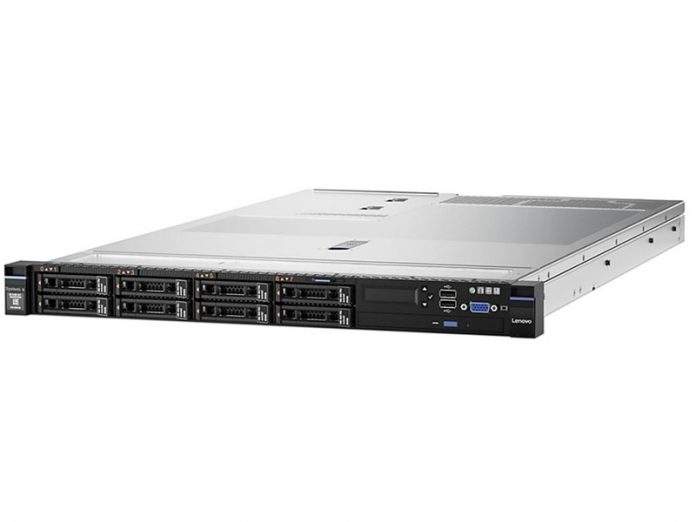Recently we had the opportunity to test the Lenovo System x3550 M5 1U server in our data center test lab. In the traditional 1U form factor, Lenovo finds a way to absolutely pack the space with potential configuration options to tailor the system to many workloads without having to step up to a less dense 2U platform.
Test Configuration
Our test configuration utilized a fairly common configuration:
- Server Platform: Lenovo x3550 M5 1U
- CPUs: 1x Intel Xeon E5-2667 V4 (8 cores/ 16 threads each)
- RAM: 128GB DDR4 RDIMMs (8 * 16GB)
- SAS SSD: 2x HGST 400GB SAS3 SSDs
- SAS Controller: Lenovo ServeRAID M5210
- Add-on Network Card Tested: Mellanox ConnectX-3 Pro EN (dual 40GbE)
- Operating Systems: Ubuntu Server 14.04 LTS, 16.04 LTS, CentOS 7.3, VMware ESXi 6.5
The Intel Xeon E5-2667 V4 is a specialized part that combines a higher clock speed with more cache per core than a standard Intel Xeon E5 V4 part. Generally, these chips are used for software that can utilize greater cache and has high per-core licensing costs.
Lenovo has a giant catalog of customization options for the server, too many for us to test. We suggest checking options or asking your sales rep if this server can be configured exactly as you need. In turn, we are going to make a few suggestions on configurations as we go through the review.
Meet the Lenovo System x3550 M5 1U Server
The Lenovo System x3550 M5 is a full sized 1U server. The front of the chassis can accept 8x 2.5″ bays and has a full complement of data center I/O for serviceability.
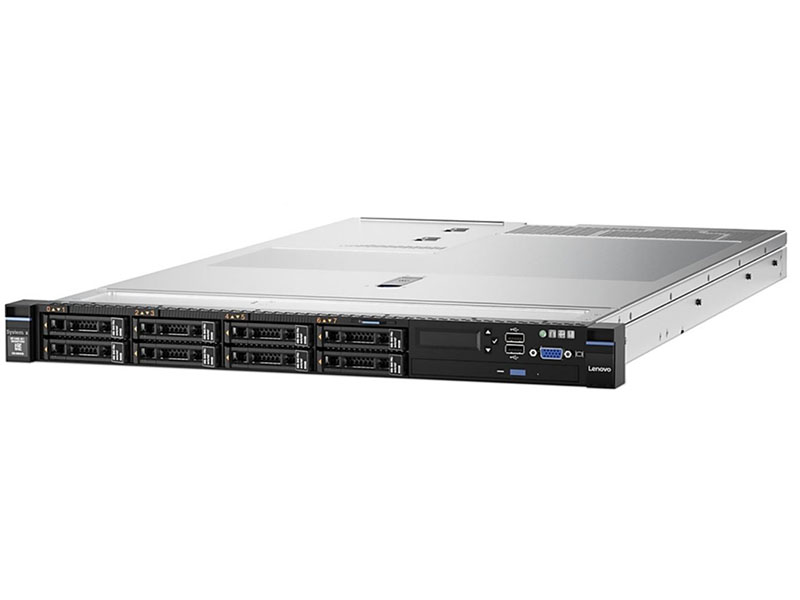
The first impression of a server, actually racking the unit, was excellent. Lenovo’s tool-less rails are very easy to install.

The top of the Lenovo server has racking and basic servicing instructions. This is a touch that many of the smaller server vendors skip, but we like:
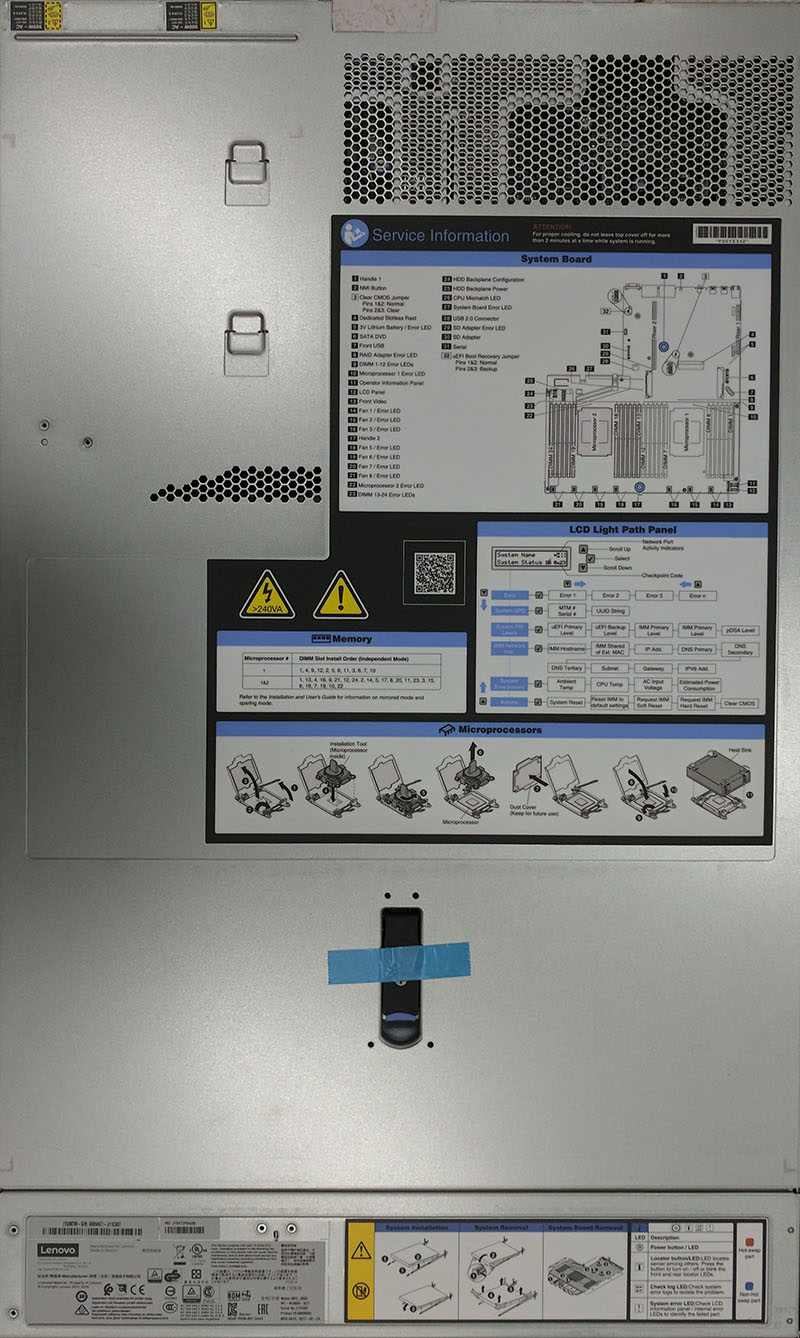
You can also see serial number information as well as an easy tool-less latching mechanism.
Inside the chassis, we can see tool-less servicing, great labeling, and a high-level of expandability built-in. Although we tested a single CPU configuration, the server is capable of housing two CPUs and a full compliment of three DIMMs per channel with four channels per CPU (24 DDR4 DIMMs total.) Many commodity servers sacrifice RAM capacity and can only house 8-16 DDR4 DIMMs so this is great from Lenovo.
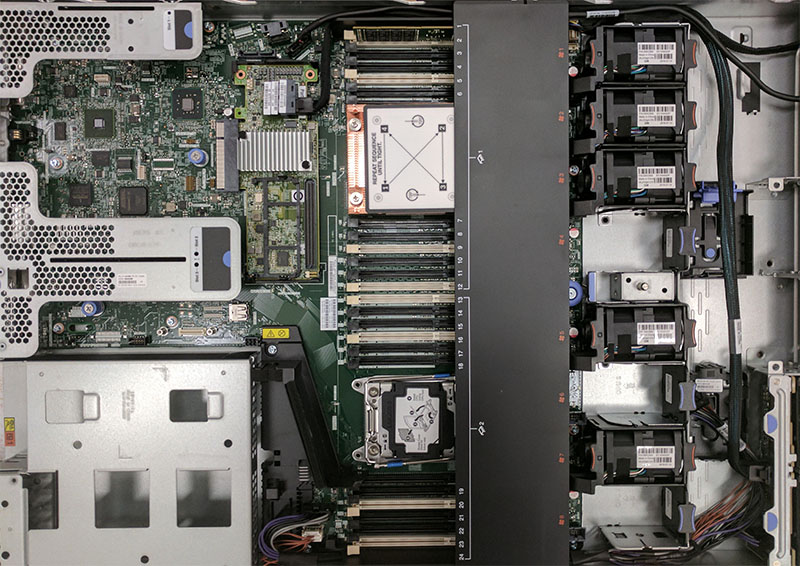
Lenovo also has a storage expansion slot internally which does not use one of the rear I/O PCIe slots. This allows Lenovo to offer SAS3 to the front drive bays while not utilizing a valuable rear I/O PCIe slot.
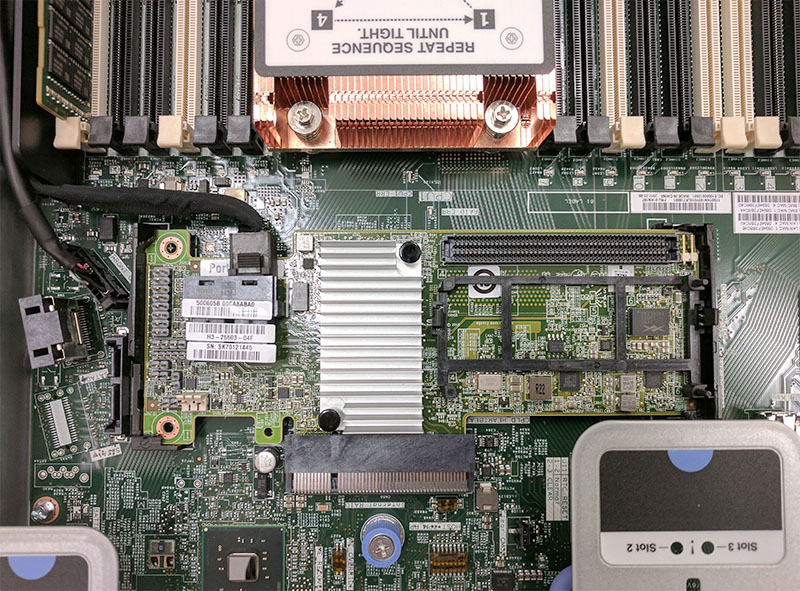
Lenovo can handle three rear I/O PCIe 3.0 cards. This is excellent since it allows the server to be customized. Lenovo also makes these slots easy to access with a focus on field serviceability.

There are a myriad of other nice features. One example is that there is a small internal USB Type-A header which can be used for a USB license key dongle or an OS boot device.
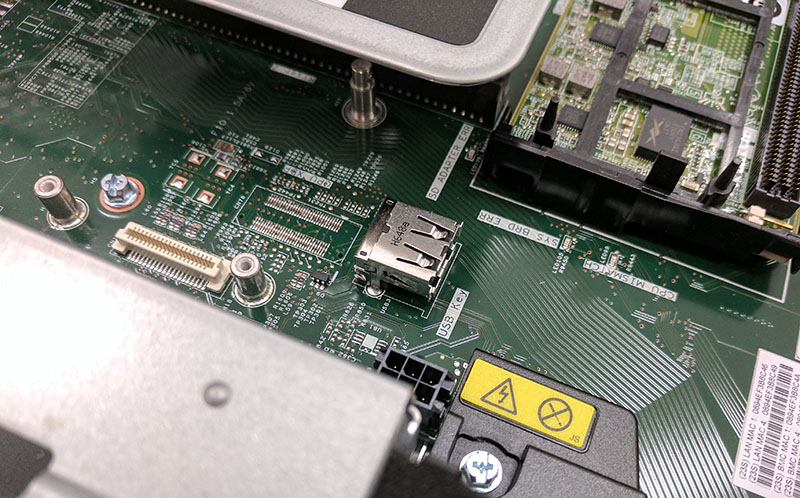
Our test unit came with a single PSU but the hot swappable configurations include different wattages and the ability to use two redundant PSUs for those utilizing A+B power. Overall, the layout and design of the Lenovo solution are great.
Lenovo System x3550 M5 Performance
We were able to run our standard benchmarks on the Lenovo x3550 M5. If you have a Ubuntu 14.04 LTS LiveCD, you can run a direct comparison to the Lenovo x3550 M5 following the four steps in the Linux-Bench how-to. Lenovo has a number of CPU options ranging from single CPU to dual CPU configurations so this is simply a snapshot of one of those options.
Python Linux 4.4.2 Kernel Compile Benchmark
This is one of the most requested benchmarks for STH over the past few years. We (finally) have a Linux kernel compile benchmark script that is consistent. Expect to see this functionality migrate into Linux-Bench soon (we are just awaiting the parser work on it.) The task was simple, we have a standard configuration file, the Linux 4.4.2 kernel from kernel.org, and make using every thread in the system. We are expressing results in terms of complies per hour to make the results easier to read.
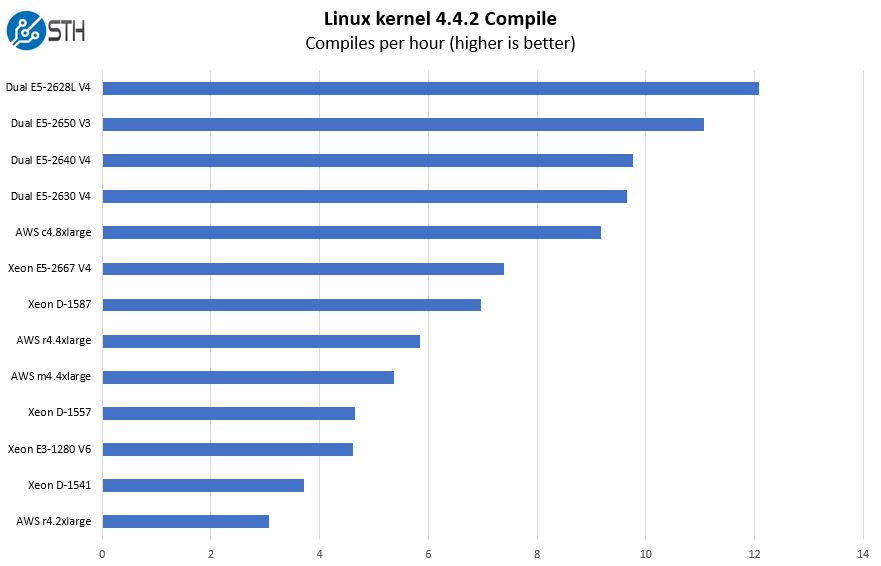
As you can see, the Intel Xeon E5-2667 V4 provides very good performance for an 8 core part. The higher clock speed and large cache both help.
NAMD Performance
NAMD is a molecular modeling benchmark developed by the Theoretical and Computational Biophysics Group in the Beckman Institute for Advanced Science and Technology at the University of Illinois at Urbana-Champaign. More information on the benchmark can be found here. We may replace this or augment with GROMACS in the next-generation Linux-Bench as that test is currently running through regressions.
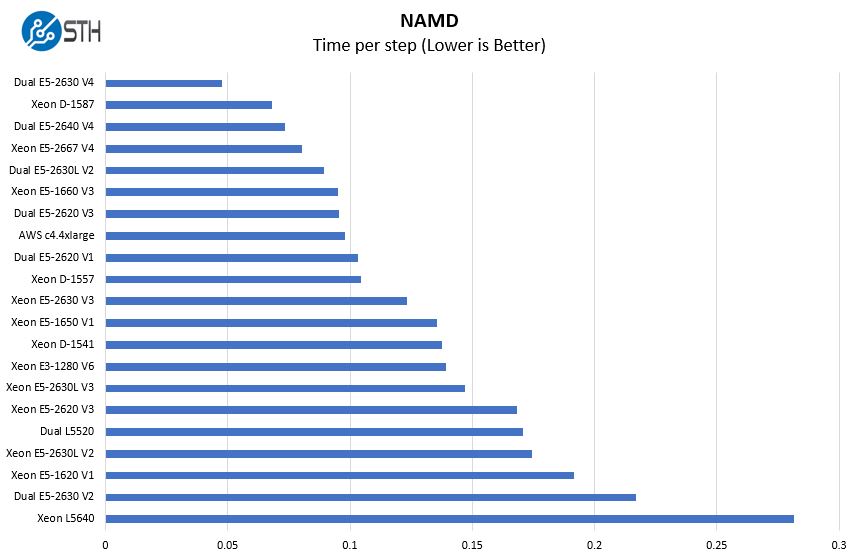
If you are running an older Xeon system, the single Intel Xeon E5-2667 V4 in the Lenovo x3550 M5 may perform better. Moving to a single CPU E5 V4 configuration can have significant TCO benefits between fewer licensed cores and lower power consumption.
OpenSSL Performance
OpenSSL is widely used to secure communications between servers. This is an important protocol in many server stacks. We first look at our sign tests:
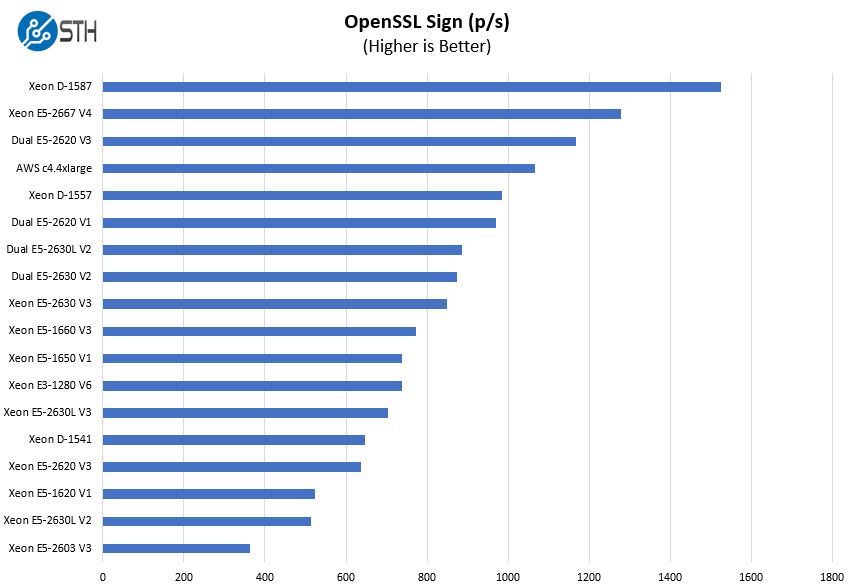
Here are the verify results:
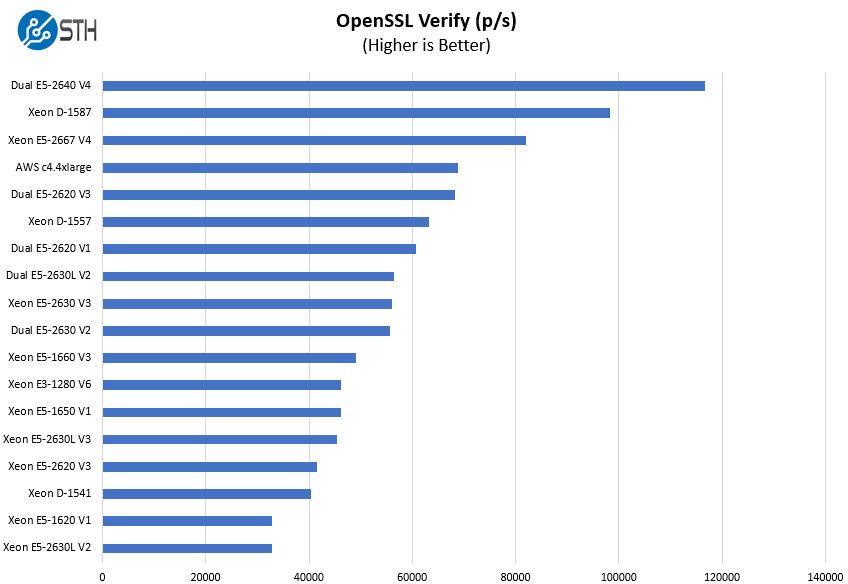
Here you can see the single Intel Xeon E5-2667 V4 keeping up with higher core count and multi-processor systems.
Networking
Regarding networking performance the four onboard Broadcom NetXtreme 1Gbase-T ports and performed as expected using iperf3:
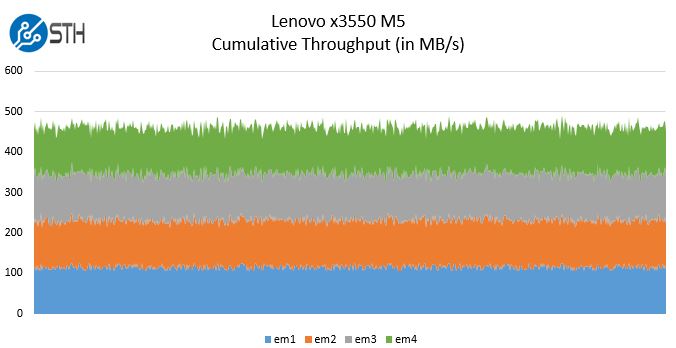
We suspect that many Lenovo server buyers will opt for one of their higher-end 10GbE or faster networking options.
Power Consumption
We used our calibrated Schneider Electric APC PDUs to measure the power consumption of the server. In the STH data center lab, we utilize a 208V circuit which is common in North American data centers.
- Idle Power Consumption: 65w
- 70% Load Power Consumption: 128w
- Maximum Observed Power Consumption: 194w
The key here is that this configuration can handle more drives and high-speed networking and still maintain a sub 1A power profile on a 208V circuit.
Lenovo Management
Lenovo Integrated Management Module II (IMM) is this generation’s Lenovo management interface. IMM provides services from monitoring to hardware inventory, to iKVM access (with an upgrade key.) These management interfaces have become an industry standard and Lenovo has what we would consider a higher-echelon implementation, far from the bare-bones implementations we see used by other vendors.
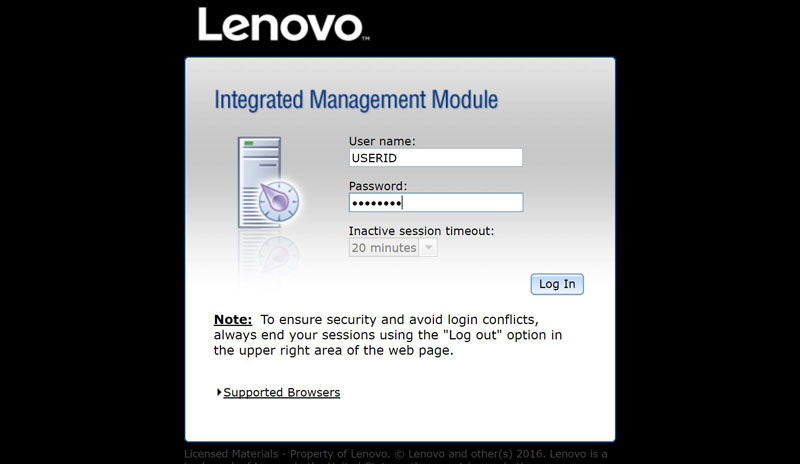
The IMM default login on our test system is:
- Username: USERID
- Password: PASSW0RD (note the zero)
We highly suggest changing the default administrative logins immediately. IMM also includes the ability to integrate with directory services such as LDAP for authentication:
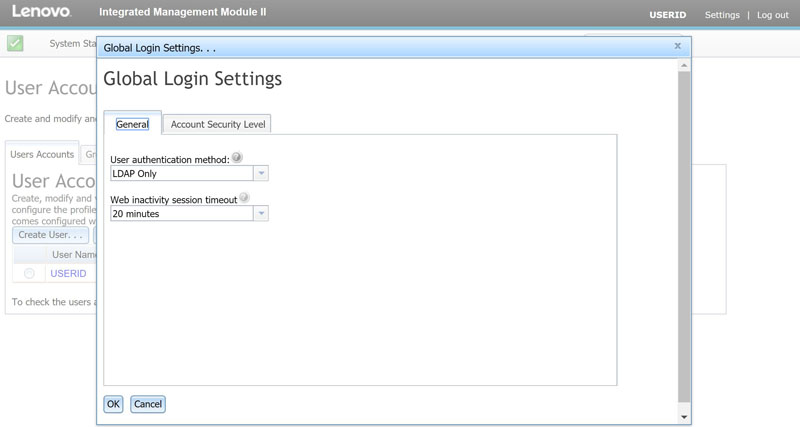
As with most solutions, the Lenovo IMM can alert on a system component failure and is configurable to send notifications both to administrators but also Lenovo service.
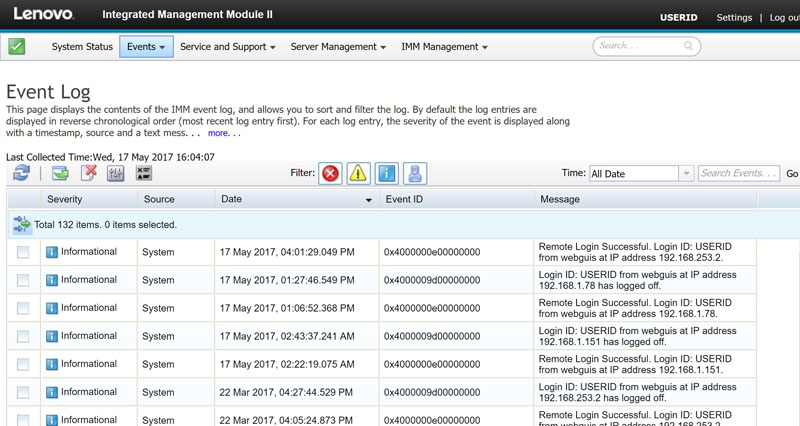
Standard features such as power on/ off/ reset are available in the base IMM with upgrades enabling remote iKVM.
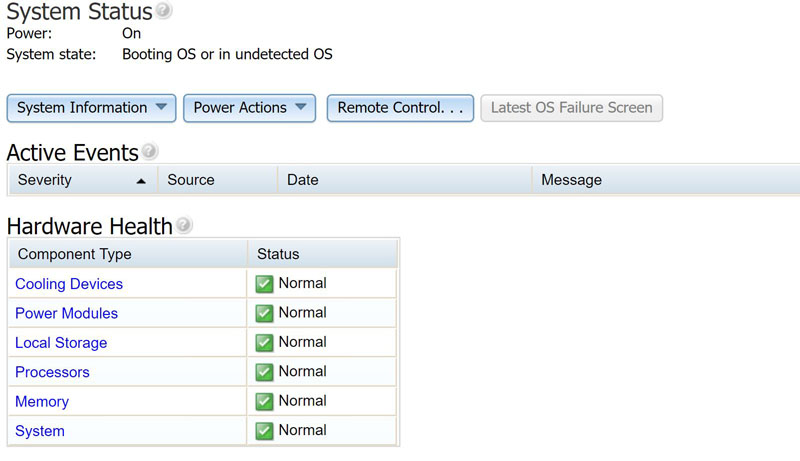
A handy feature that Lenovo has is the ability to force a PXE boot using the web management interface.
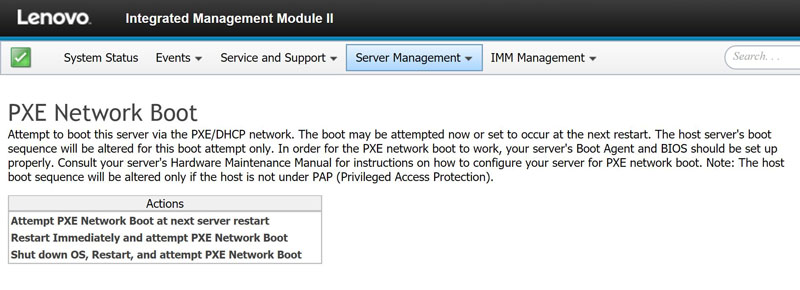
Many management interfaces from other vendors would require entering either the BIOS or a keystroke boot menu to force a PXE boot. This is one example of the value-add differentiation of the IMM solution.
Another higher function ability that IMM has is the ability to manage storage configurations.
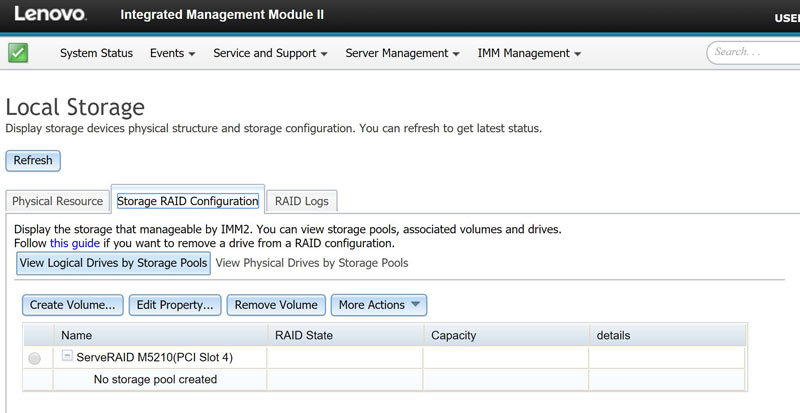
Here we can see the Lenovo ServeRAID M5210 add-on card that is installed in our test server. You can set RAID configurations from the management interface and do not need to go into another tool or the firmware to edit these.
With the IMM upgrade, you can get remote KVM functionality which allows for complete remote administration including remote media.
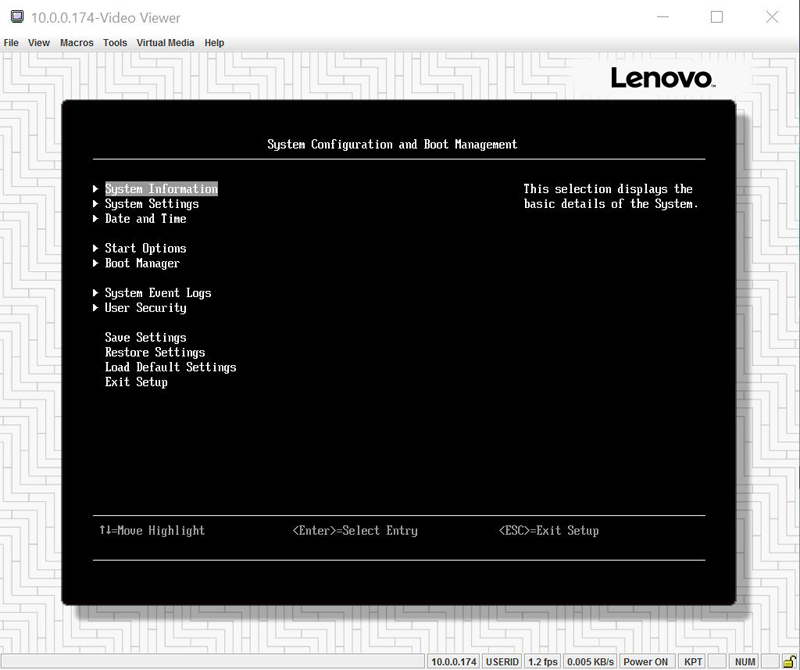
The one area we would have liked to see Lenovo IMM improve is in terms of speed. The interface is slightly slower to load than some other options. Generally, the BMC SoCs are based on low-power ARM chips and are meant to be accessed infrequently. We do hope that this is an area Lenovo looks into in the future.
Final Words
Overall, the Lenovo System x3550 M5 is a solid server. The server’s mechanical design clearly has forethought into customization as well as ease of serviceability. When it comes to managing clusters of these servers, the Lenovo IMM allows for monitoring, access management, and troubleshooting remotely. We also like the fact that the Lenovo x3550 M5 can accept higher-TDP CPUs, unlike some competitive systems such as the HPE DL60 Gen 9 we will have a review of shortly.

